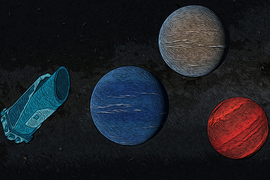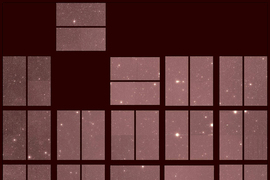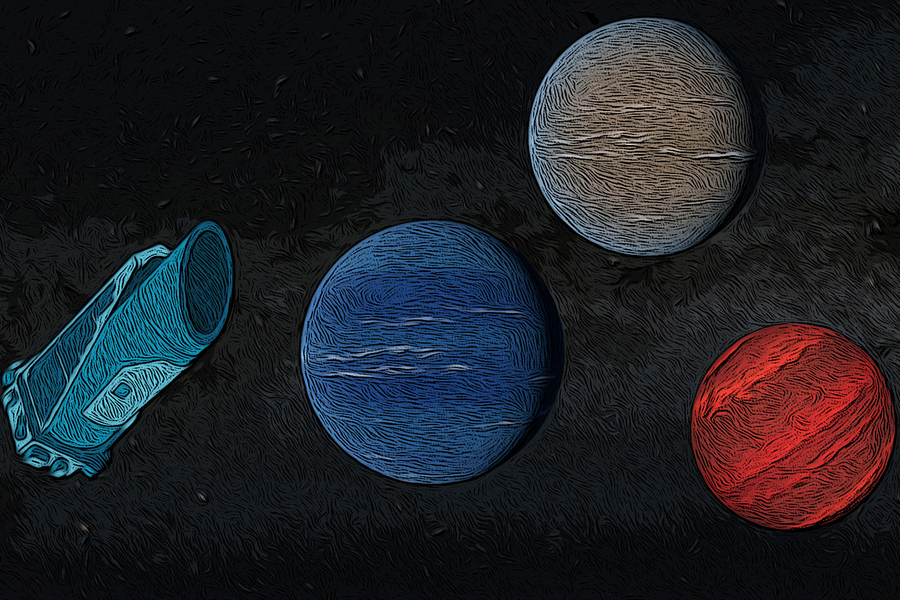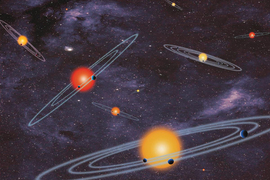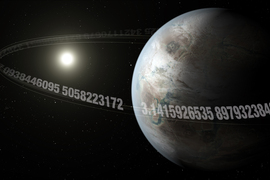More than 5,000 planets are confirmed to exist beyond our solar system. Over half were discovered by NASA’s Kepler Space Telescope, a resilient observatory that far outlasted its original planned mission. Over nine and a half years, the spacecraft trailed the Earth, scanning the skies for periodic dips in starlight that could signal the presence of a planet crossing in front of its star.
In its last days, the telescope kept recording the brightness of stars as it was running out of fuel. On Oct. 30, 2018, its fuel tanks depleted, the spacecraft was officially retired.
Now, astronomers at MIT and the University of Wisconsin at Madison, with the help of citizen scientists, have discovered what may be the last planets that Kepler gazed upon before going dark.
The team combed through the telescope’s last week of high-quality data and spotted three stars, in the same part of the sky, that appeared to dim briefly. The scientists determined that two of the stars each host a planet, while the third hosts a planet “candidate” that has yet to be verified.
The two validated planets are K2-416 b, a planet that is about 2.6 times the size of the Earth and that orbits its star about every 13 days, and K2-417 b, a slightly larger planet that is just over three times Earth’s size and that circles its star every 6.5 days. For their size and proximity to their stars, both planets are considered “hot mini-Neptunes.” They are located about 400 light years from Earth.
The planet candidate is EPIC 246251988 b — the largest of the three worlds at almost four times the size of the Earth. This Neptune-sized candidate orbits its star in around 10 days, and is slightly farther away, 1,200 light years from Earth.
“We have found what are probably the last planets ever discovered by Kepler, in data taken while the spacecraft was literally running on fumes,” says Andrew Vanderburg, assistant professor of physics in MIT’s Kavli Institute for Astrophysics and Space Research. “The planets themselves are not particularly unusual, but their atypical discovery and historical importance makes them interesting.”
The team has published their discovery today in the journal Monthly Notices of the Royal Astronomical Society. Vanderburg’s co-authors are lead author Elyse Incha, at the University of Wisconsin at Madison, and amateur astronomers Tom Jacobs and Daryll LaCourse, along with scientists at NASA, the Center for Astrophysics of Harvard and the Smithsonian, and the University of North Carolina at Chapel Hill.
Data squeeze
In 2009, NASA launched the Kepler telescope into space, where it followed the Earth’s orbit and continuously monitored millions of stars in a patch of the northern sky. Over four years, the telescope recorded the brightness of over 150,000 stars, which astronomers used to discover thousands of possible planets beyond our solar system.
Kepler kept observing beyond its original three-and-a-half-year mission, until May 2013, when the second of four reaction wheels failed. The wheels served as the spacecraft’s gyroscopes, helping to keep the telescope pointed at a particular point in the sky. Kepler’s observations were put on pause while scientists searched for a fix.
One year later, Kepler restarted as “K2,” a reworked mission that used the sun’s wind to balance the unsteady spacecraft in a way that kept the telescope relatively stable for a few months at a time — a period called a campaign. K2 went on for another four years, observing over half a million more stars before the spacecraft finally ran out of fuel during its 19th campaign. The data from this last campaign comprised only a week of high-quality observations and another 10 days of noisier measurements as the spacecraft rapidly lost fuel.
“We were curious to see whether we could get anything useful out of this short dataset,” Vanderburg says. “We tried to see what last information we could squeeze out of it.”
By eye
Vanderburg and Incha presented the challenge to the Visual Survey Group, a team of amateur and professional astronomers who hunt for exoplanets in satellite data. They search by eye through thousands of recorded light curves of each star, looking for characteristic dips in brightness that signal a “transit,” or the possible crossing of a planet in front of its star.
The citizen scientists are especially suited to combing through short datasets such as K2’s very last campaign.
“They can distinguish transits from other wacky things like a glitch in the instrument,” Vanderburg says. “That’s helpful especially when your data quality begins to suffer, like it did in K2’s last bit of data.”
The astronomers spent a few days efficiently looking through the light curves that Kepler recorded from about 33,000 stars. The team worked with only a week’s worth of high-quality data from the telescope before it began to lose fuel and focus. Even in this short window of data, the team was able to spot a single transit in three different stars.
Incha and Vanderburg then looked at the telescope’s very last, lower-quality observations, taken in its last 11 days of operation, to see if they could spot any additional transits in the same three stars — evidence that a planet was periodically circling its star.
During this 11-day period, as the spacecraft was losing fuel, its thrusters fired more erratically, causing the telescope’s view to drift. In their analysis, the team focused on the region of each star’s light curves between thruster activity, to see if they could spot any additional transits in these less data-noisy moments.
This search revealed a second transit for K2-416 b and K2-417 b, validating that they each host a planet. The team also detected a similar dip in brightness for K2-417 b in data taken of the same star by NASA’s Transiting Exoplanet Survey Satellite (TESS), a mission that is led and operated by MIT. Data from TESS helped to confirm the planet candidate around this star.
“Those two are pretty much, without a doubt, planets,” Incha says. “We also followed up with ground-based observations to rule out all kinds of false positive scenarios for them, including background star interference, and close-in stellar binaries.”
“These are the last chronologically observed planets by Kepler, but every bit of the telescope’s data is incredibly useful,” Incha says. “We want to make sure none of that data goes to waste, because there are still a lot of discoveries to be made.”
This research was supported, in part, by MIT, NASA, and the University of Wisconsin Undergraduate Academic Awards.
